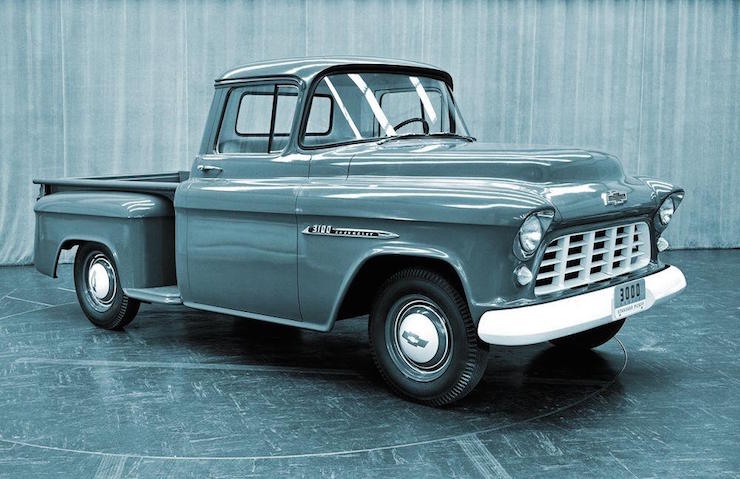History of the Chevy Truck: 1955-1962
The Chevy truck is an iconic automobile and a powerful influencer today. Here’s what went down between the years of 1955 and 1962 in the world of Chevy trucks.
Advance Design to the Task Force

The year 1955 started off with the Advance Design series — a bigger, stronger, and sleeker design than that which was previously offered. In the lineup of Suburbans, panel trucks, canopy express vehicles, and cab overs, the same basic design was used throughout.
Until production ended in March of 1955, the Advance Design series held the top seller title. It was followed by the Task Force Series in late 1955. The 1955 second series Chevy truck came with standard features and optional add-ons like 12 volt electrical systems. It was also the first available with a V8, sporting a 265 cubic inch engine.
Changes Throughout the Years

When the Task Force took over the lineup, the body was redesigned with the truck industry’s first wrap around windshield — and optional wrap around rear window for Deluxe cab models. The fenders featured single headlights and a one-piece emblem. For the first time in GM history, trucks were available with power steering and power brakes. The electrical system got an upgrade to 12 volts. 1955 was also the only year for the 7 foot long bed.

During 1956, much of the prior year’s design carried over, with the exception of a wider hood emblem. This would be the last year an egg crate grille was found on a Chevy truck. In 1957, the trucks would get the more open grille, and it was only found on this year. The hood was flatter and had two spears at the top, similar to the ’57 Chevy Bel Air. Emblems went from script to oval shaped.

For the first time, the fleetside (aka straight side) bed became available in 1958. The front end was also significantly redesigned for this year. The light duty trucks had a new name - Apache - medium duty trucks went by Vikings, and Spartan was the name for heavy-duty trucks. These trucks now had four headlights and a shorter, wider grille which covered the whole width of the front end. The parking lights were moved behind the grille, which was similar to the 1955-1956 models. This was the first year factory air conditioning was found in a Chevy truck. Few changes were made for 1959 — just a larger hood emblem and new fender badging.
Enter the Chevy C/K…

Beginning in 1960, the Chevy C/K was the name of the full-size pickup truck lineup. “C” indicated the truck was 2WD and “K” indicated 4WD. This would be the production truck for many years until the famous Silverado nameplate took over in 1999.
The new model was introduced with a redesigned body style with many changes. It sat on a ladder frame that allowed the cab to sit lower than before and featured an independent front suspension for car-style handling. The designations also changed from 3100, 3200, and 3600 to C10 or K10 1/2 ton, C10 or K10 long 1/2 ton, C20 or K20 3/4 ton, and C30 1 ton. Also beginning in 1960, the trucks were available in the smooth Fleetside or Stepside.

For 1960, 1961, and 1962, all models would use a torsion bar front suspension and trailing arm suspension in the rear. Engines included the 135 horsepower 236 I6, 150 horsepower 261 I6, and 185 horsepower 283 V8. The years following would bring even more changes for the Chevy truck lineup.
From 1955 to 1962, the Chevy truck evolved quickly. All years were eye-catching, and, for the most part, they were moving the market forward. Without these vital years, the Chevy truck wouldn’t be such an American icon.